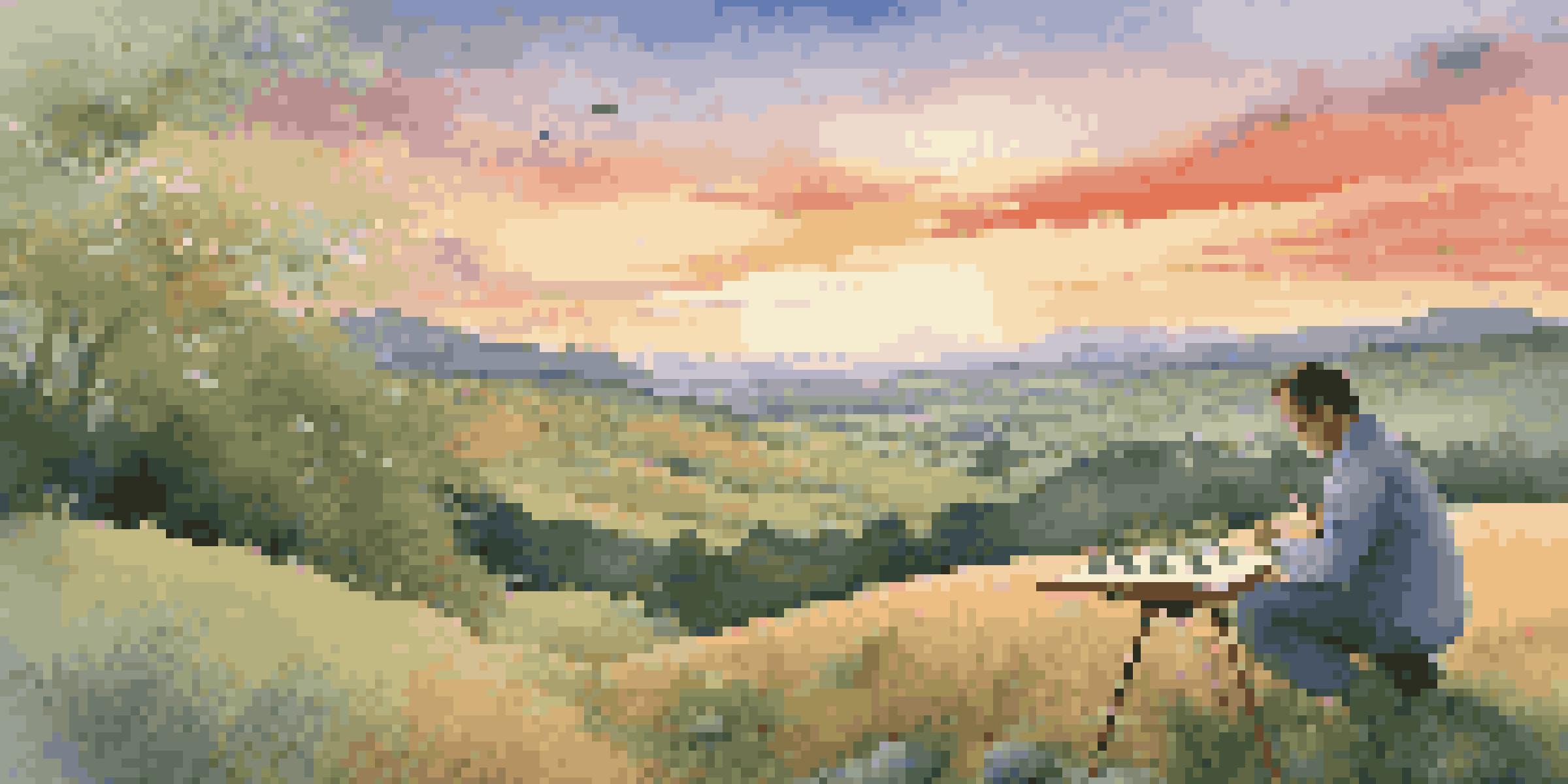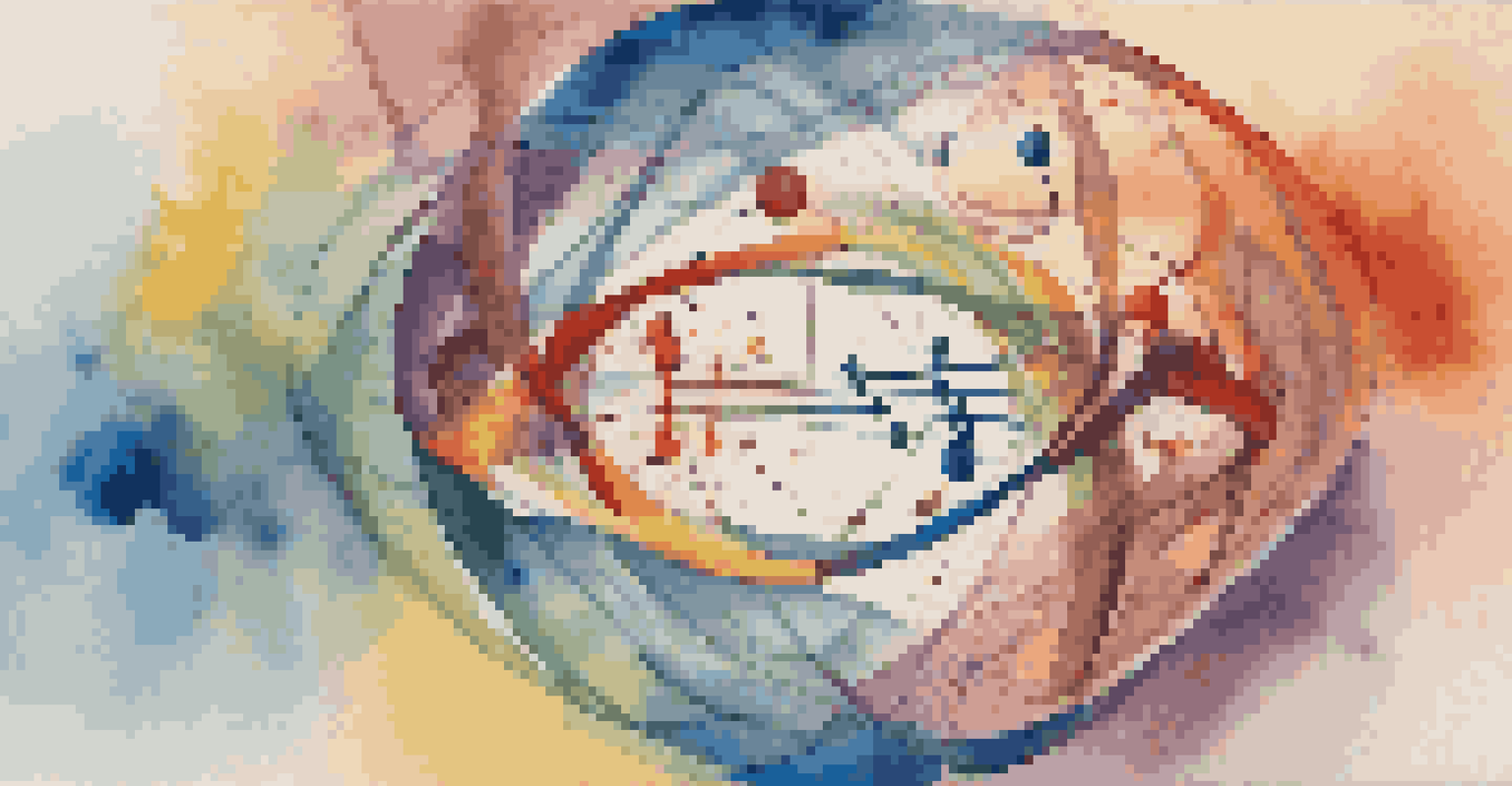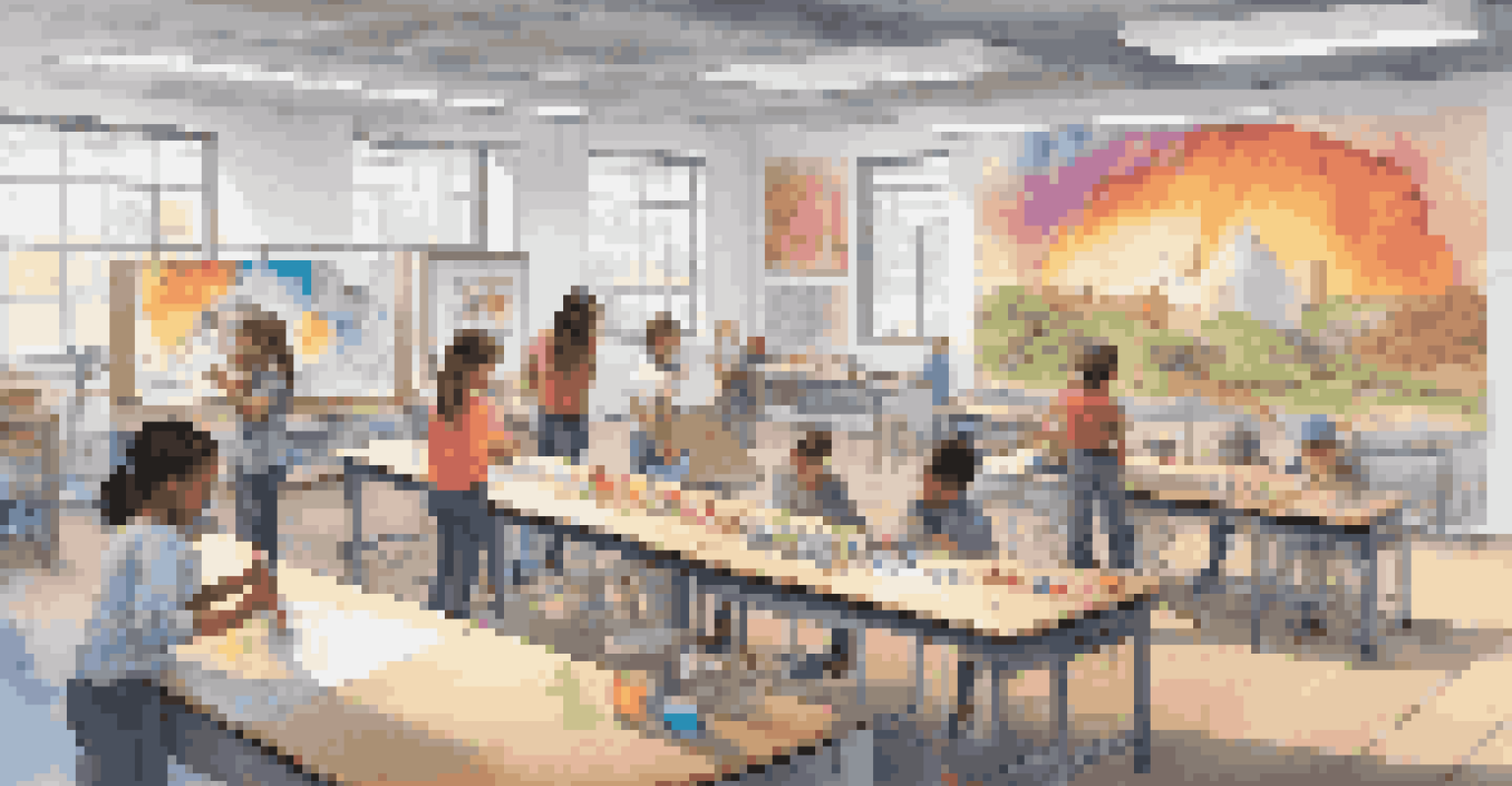The Intersection of Art and Science: Exploring Creative Boundaries

Understanding the Connection Between Art and Science
At first glance, art and science might seem worlds apart. However, both fields share a common goal: to explore and explain the human experience. Art captures emotions and perspectives, while science seeks to understand the underlying principles of the universe. This intersection creates a fertile ground for innovation and creativity, where ideas can flourish.
Art is the most beautiful of all lies; science is the most truthful of all truths.
Consider how artists like Leonardo da Vinci embraced both disciplines. His works are not just masterpieces but also showcase anatomical precision and scientific inquiry. This blending of art and science not only enhances the depth of artistic expression but also drives scientific discovery forward, revealing the beauty found in complex concepts.
As we delve deeper into this relationship, it’s clear that both fields benefit from each other’s insights. Artists often draw inspiration from scientific discoveries, while scientists can use artistic methods to visualize data, making complex information more accessible and engaging.
Historical Perspectives: Art and Science Through the Ages
The intertwining of art and science isn't a modern phenomenon; it dates back centuries. From the Renaissance to the Enlightenment, artists and scientists collaborated to explore new ideas. For instance, the use of perspective in painting was influenced by mathematical principles, showcasing how intertwined these fields have always been.

Fast forward to the 20th century, where movements like Surrealism and Dadaism were influenced by psychological theories. Artists like Salvador Dalí sought to express the workings of the subconscious, reflecting scientific advancements in psychology. This historical interplay illustrates how shifts in one discipline can lead to breakthroughs in another.
Art and Science: A Creative Nexus
Both fields enrich each other, as art captures human emotion while science seeks to explain our universe.
By looking at past collaborations, we gain insight into the potential for future innovations. Understanding these historical connections can inspire today’s creators to think beyond traditional boundaries, encouraging a renaissance of interdisciplinary collaboration.
The Role of Technology in Merging Art and Science
In today’s digital age, technology plays a crucial role in bridging the gap between art and science. Tools like 3D printing and virtual reality allow artists to create in ways previously unimaginable. For example, artists can now visualize complex scientific concepts, making them more relatable and understandable to the general public.
Science and art are both expressions of the human spirit, and they can be brought together in the service of a higher understanding of life.
Moreover, data visualization has become an essential tool for both artists and scientists. By turning raw data into stunning visuals, we can tell compelling stories that resonate with audiences. This technique not only enhances comprehension but also sparks curiosity, inviting viewers to explore further.
As technology continues to evolve, the possibilities for creative expression and scientific exploration will expand. This ongoing relationship fosters a culture of innovation, encouraging both artists and scientists to push their boundaries and explore new frontiers.
Fostering Creativity in STEM through Art
The push for STEM (Science, Technology, Engineering, Math) education often overlooks the importance of creativity. Integrating the arts into STEM transforms it into STEAM, emphasizing the role of creativity in scientific inquiry. This approach nurtures innovative thinkers who can solve complex problems through imaginative solutions.
For instance, workshops that blend art and science encourage students to think critically and creatively. By engaging in hands-on projects, they learn to collaborate and communicate effectively, essential skills in both fields. This not only enhances their learning experience but also prepares them for future careers where creativity is key.
Tech Bridges Art and Science
Advancements like 3D printing and data visualization empower artists and scientists to create innovative experiences.
By fostering creativity within STEM, we can cultivate a generation of thinkers who approach challenges with a fresh perspective. This holistic approach ensures that future innovations are not only practical but also resonate emotionally with society.
Case Studies: Successful Collaborations of Art and Science
Numerous examples of successful collaborations illustrate the power of merging art and science. One notable case is the collaboration between artist Olafur Eliasson and scientists at the University of Texas. Together, they created installations that not only engage the public but also educate them about climate change and its impacts.
Another example is the work of biomedical artist Ellen J. R. O’Neill, who uses her skills to create accurate representations of medical concepts. Her illustrations help bridge the gap between complex scientific information and patient understanding, showing how art can enhance communication in healthcare.
These case studies highlight the transformative potential of artistic and scientific collaboration. By combining their expertise, artists and scientists can create impactful experiences that inspire change and promote awareness in society.
Art as a Tool for Scientific Communication
Art serves as a powerful medium for scientific communication, allowing complex ideas to be conveyed in an engaging manner. Consider how infographics and animations can break down intricate data into digestible visuals, making information more accessible to wider audiences. This not only aids understanding but also sparks interest in scientific topics.
Moreover, art can evoke emotional responses that resonate with individuals on a personal level. By humanizing scientific issues, such as climate change or health crises, artists can motivate people to take action. This emotional connection is often more effective than statistics alone.
STEAM: Fostering Future Innovators
Integrating the arts into STEM education promotes creativity, preparing students to approach challenges with fresh perspectives.
In an age where misinformation can spread rapidly, using art to communicate science accurately is crucial. It bridges gaps in understanding and fosters informed discussions, ensuring that people are better equipped to engage with important scientific issues.
The Future: What Lies Ahead for Art and Science
As we look to the future, the potential for further integration of art and science is exciting. With advancements in technology and a growing emphasis on interdisciplinary collaboration, the possibilities are endless. We may see more artists and scientists working together to tackle global challenges, from climate change to health disparities.
Educational institutions are also beginning to recognize the importance of this intersection. Programs that encourage students to explore both fields are gaining popularity, preparing the next generation for a world where creativity and scientific inquiry go hand in hand. This shift in education will likely lead to more innovative solutions in various sectors.

Ultimately, the intersection of art and science will continue to evolve, driving creativity and innovation. By embracing this relationship, we can create a future that values both artistic expression and scientific rigor, leading to a deeper understanding of the world around us.